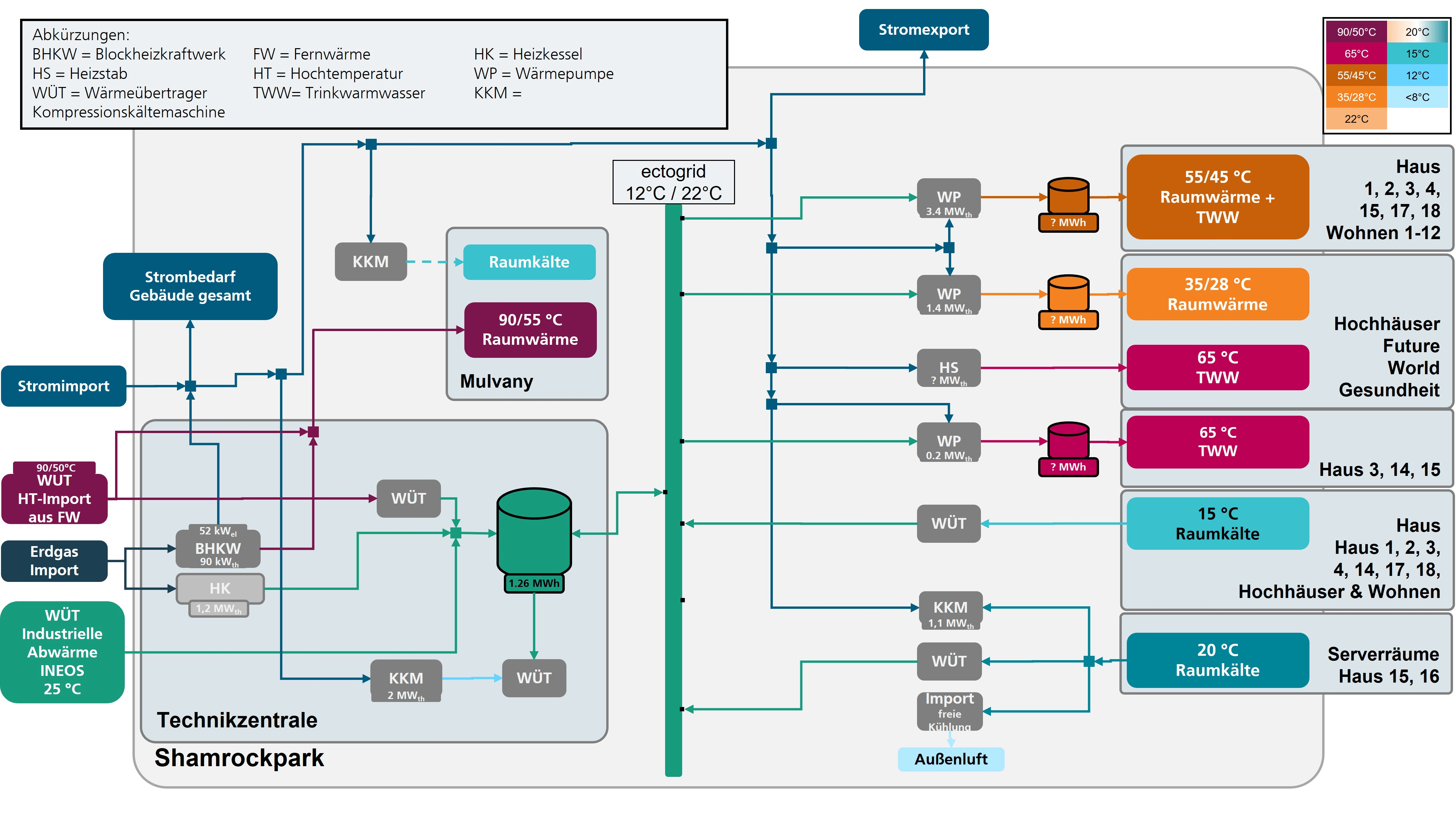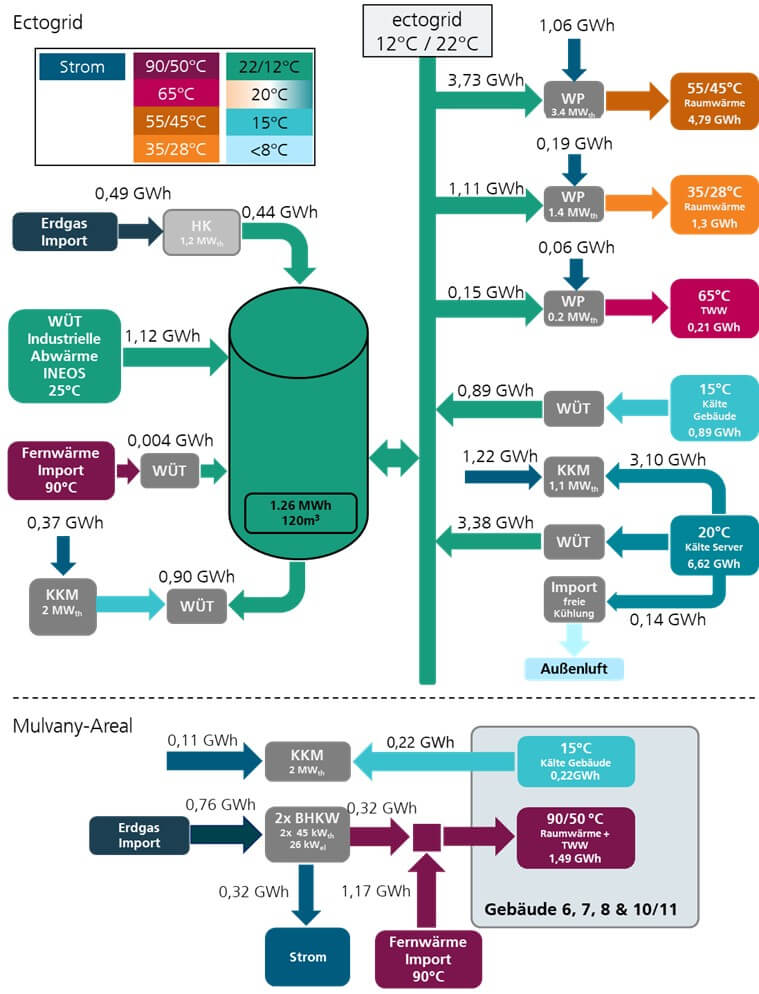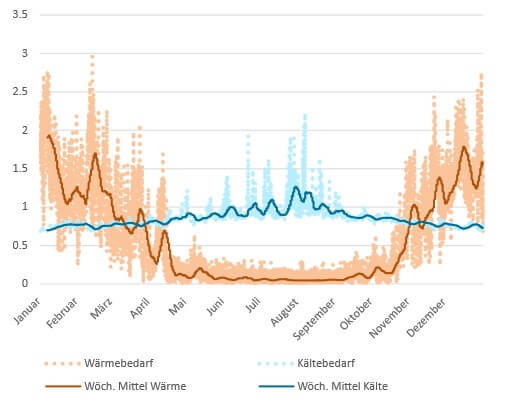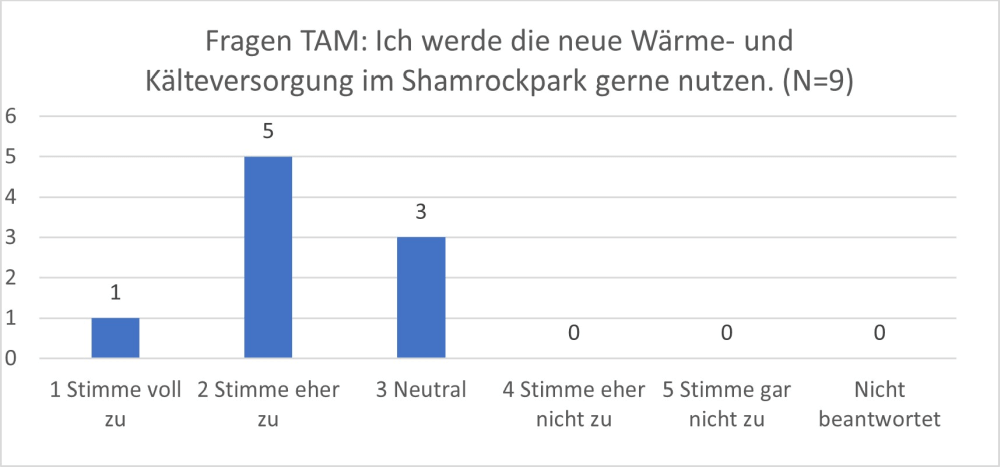| Duration: | 2019 - 2023 |
| Contracting Authority / Sponsors: |
Bundesministerium für Wirtschaft und Klimaschutz (BMWK) |
| Project Partners: | E.ON Energy Solutions GmbH |
| Website: | Project CLUE |
| Project Focus: |
CLUE-Shamrockpark
Monitoring and Optimization of an Ectogrid Energy System with Extension of a Planning Tool


The planning, realization and operation of a low-temperature or “cold” local heating network is being demonstrated at the former Shamrockpark mine site in Herne. The project is supported by two research projects funded by the Federal Ministry for Economic Affairs and Energy. The planning and optimization of the Shamrockpark energy system is being carried out as part of the “TransUrban.NRW” project. The “CLUE-Shamrockpark” project, on the other hand, focuses primarily on the question of which external flexibilities the Shamrockpark district energy system could provide to the upstream electricity system due to its sector coupling and how the stakeholders in the districts can be won over for the transformation.
The german project "CLUE-Shamrockpark" was implemented as part of the European project “CLUE - Concepts, Planning, Demonstration and Replication of Local User-friendly Energy Communities”. Unlike other sub-projects, the focus is not on developing solutions for local energy communities in the electricity sector, but on investigating heating networks, partly because energy communities are not yet allowed to share the renewable electricity they generate.
The innovative element of the Shamrockpark energy system is the implementation of the LowEx heating network, which is being realized by e.on under the own name “ectogrid”. The ectogrid enables the use of low-temperature waste heat from a neighboring industrial plant to meet both heating and cooling needs. Furthermore, there is the option of decentralized feed-in and withdrawal of heat quantities.
In cold local heating networks, heat is supplied by means of decentrally installed heat pumps (HP). The coupling of the electricity and heating sectors makes it possible to use the thermal system to provide flexibilities in the electricity sector.


For Shamrockpark, the business models that arise for RE communities in the heating sector were examined. It was shown that the LowEx heating networks create the technical conditions for communities in the heating sector to be able to feed in smaller amounts of heat decentrally.
Since the acceptance of the owners and users of the buildings in the neighborhood is a crucial factor for the successful implementation of a new energy system, an analysis of the interest groups in Shamrock Park was carried out. A survey of employees in the buildings in Shamrock Park was used to determine the extent to which they are open to new energy systems such as the ectogrid.
From the energy supplier's point of view, the results in particular with regard to the flexibilities that can be provided are groundbreaking for the expansion of LowEx networks. These are helpful for the further development of ectogrid heating networks in practice. It was shown that this technology offers extensive opportunities for sector coupling. The provision of balancing power through the modified operation of heat pumps and chillers is an attractive business model.